Carbohumic
Liquid humus
CARBOHUMIC is a dense humus extract obtained from lignite. The organic substance contained in the preparation exists in liquid form (humic acids, humins) and solid form (active carbon, biochar). Being an active component of humus, Carbohumic exerts a positive influence on the structure of soil and substrate, stimulates the growth of root system, improves soil fertility and supports plant growth and yield. Applied regularly, it contributes to improvement of soil fertility and increase of humus level in soil. The product is designated for use in cultivation of all species of plants.
Where will you use Carbohumic?
The preparation can be used successfully in horticulture, agriculture, nurseries, amateur gardening in home and allotment gardens as well as for planting in particularly adverse climate or terrain conditions. It is designated for soil application prior to setting up cultivation in order to improve and fertilize substrates and soils, especially degenerated and organically exploited ones, and as top-dressing – through foliar application during plant growth and development. It is recommended for soaking (incrustation during seed, tuber and bulb treatment) of root system of seedlings and roots of various plants. It proves effective for hydroponics container cultures or in organic and ground substrates.
Organic
product
What will you find
in our preparation?
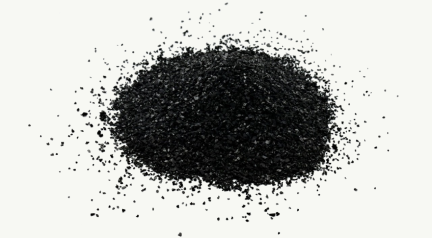
Leonardite
A soft mineraloid of vitreous gloss and black or dark brown colour, whose deposits often accompany those of soft brown coal – lignite – its oxidized form. It is the most concentrated source of humic substances (fulvic acids, humic acids) and humins available in nature, where the content of those substances amounts to as high as 95%. Its properties differs depending on the place of extraction.
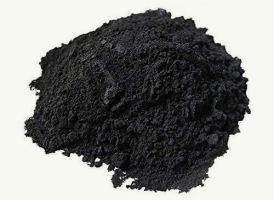
Biochar
The content of carbon in organic matter is the chief determinant of soil fertility. It is an indicator of its quality and of human impact on agricultural and natural ecosystems. Contained in soil, it significantly contributes to the global balance of that element. The most frequent source of organic carbon in soil is the above ground and underground biomass of plants introduced thereinto as well as organic mass introduced as various kinds of organic fertilizers (cow dung and liquid manure) in the form of compost, sewage sludge etc. Organic carbon contained in soil is a highly reactive component, which remains in dynamic balance with the environment.
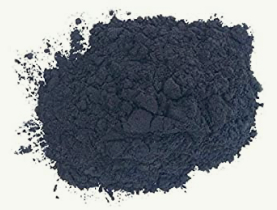
Active carbon
Often referred to as medicinal charcoal, it designates carbon material of highly developed specific surface area and porosity and thus high capacity for adsorption of chemical compounds from gases and liquids. Main applications of active carbons include removal of fragrances (Carbohumic in connection with natural fertilizers such as cow dung or liquid manure), discoloration, removal of harmful substances from solutions, and even sequestration of CO2 from soil and air. Due to its porous structure, active carbon is capable of adsorption of both organic and inorganic pollutants at a single go.
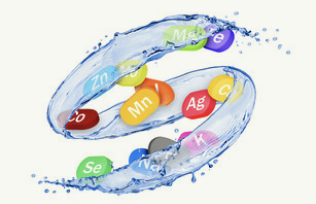
Micro- and microelements
Lignite is a balanced source of numerous mineral components, so precious for plants, including the most important of the biogenic elements forming organic compounds – carbon (C), but also magnesium, calcium, iron, sulphur, boron, zinc, copper, manganese, molybdenum etc.) of organic origin, and thus much more easily assimilable for plants. Regular supply of nutrients to soils is a key aspect in the context of the proper functioning of plants and the entire soil environment
Available product
and packaging types
Available product
and packaging types
Available containers




Product filtration rate and exemplary
range of application
1000 μm / 20 mesh
This is the basic, i.e. the least filtered one – with very high content of organic substance and organic carbon originating from lignite.
This is the base, i.e. the least filtered version of CARBOHUMIC – in the form of the so-called pulp – with a very high content of organic matter, originated directly from brown coal. It is designated to be used in watering cans, water carts (all kinds of field crops; with option of combining with UAN and liquid manure), watering hose (for direct spraying from Mauser container) etc. In other words, all irrigation tools not equipped with filtering systems (or having such systems disassembled).
200 μm / 80 mesh
The intermediate version, offering full application range of the basic version, additionally designated for less precise filters of maximum range 80 mesh (200 µm). Using this version with filters operating above the 80 mesh range may result in their clogging.
100 μm / 140 mesh
Version with the scope of application of the two previous filtration stages, additionally with the possibility of using, for example, in tractors with sprayers with filters up to the 140 mesh / 100 µm. Using this version with filters operating above the 140 mesh range may result in their clogging.
80 μm / 187 mesh
The most filtered version, encompassing full application range of basic and two intermediate versions, dedicated primarily for specialists who use professional irrigation systems (such as drip irrigation lines, sprayers etc.) equipped with finer filters. Product sifting entirely marginalizes the risk of clogging for majority of precision filters available on the market (187 mesh).
Bioactivity of lignite is a few times higher than bioactivity of most common carriers of humic substances such as compost or cow dung
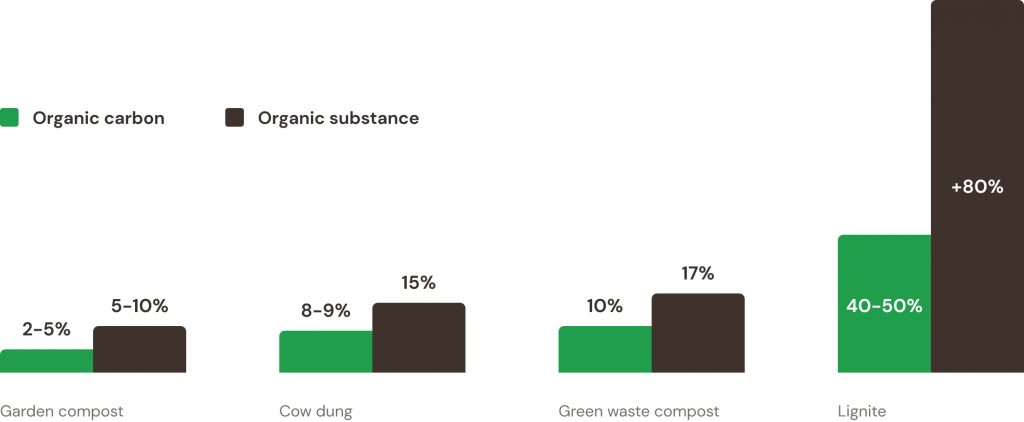
Advantages of using CARBOHUMIC
Advantages of using CARBOHUMIC
 |
|
 |
|
 |
|
Recommended applications
Pick Your section









